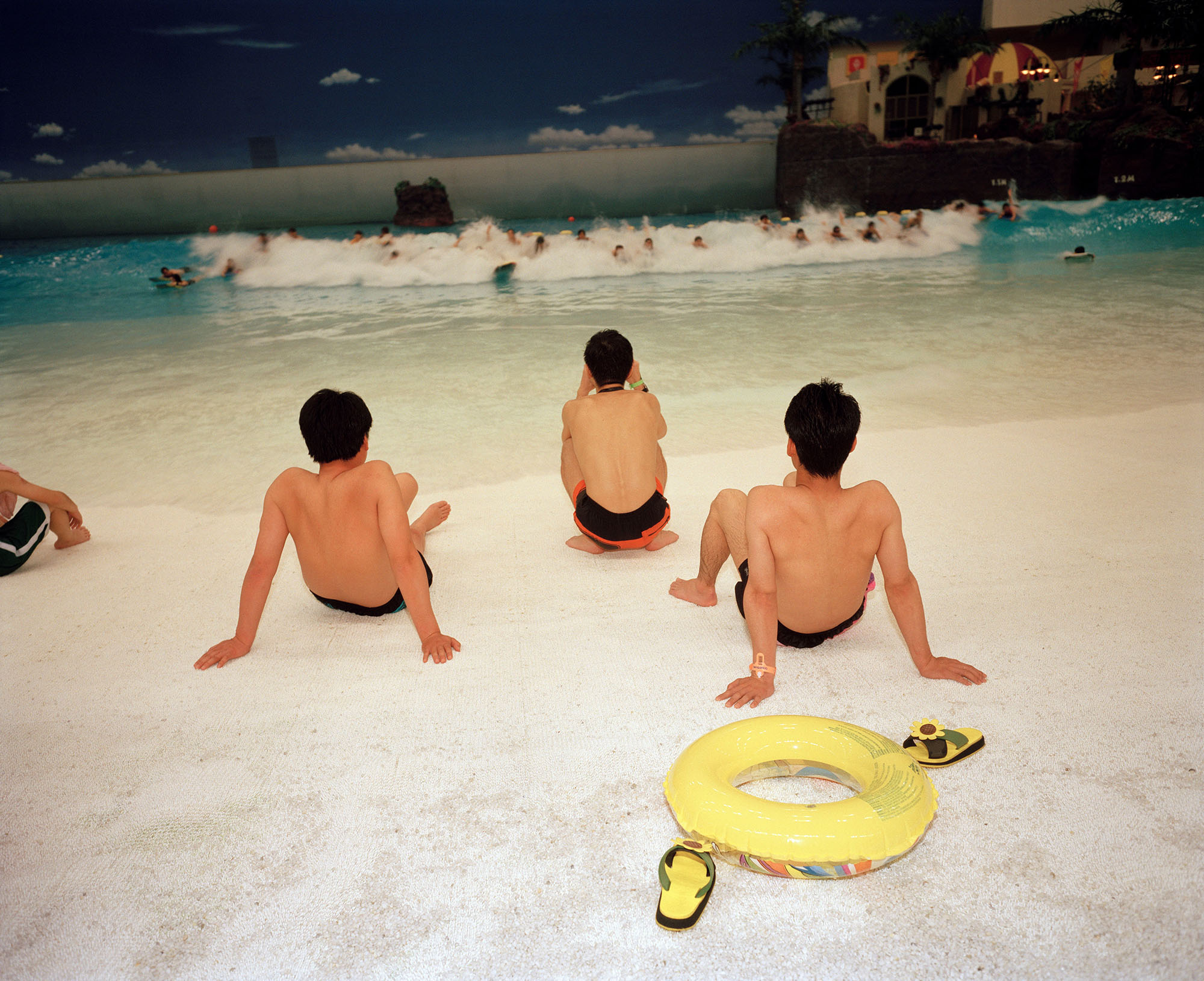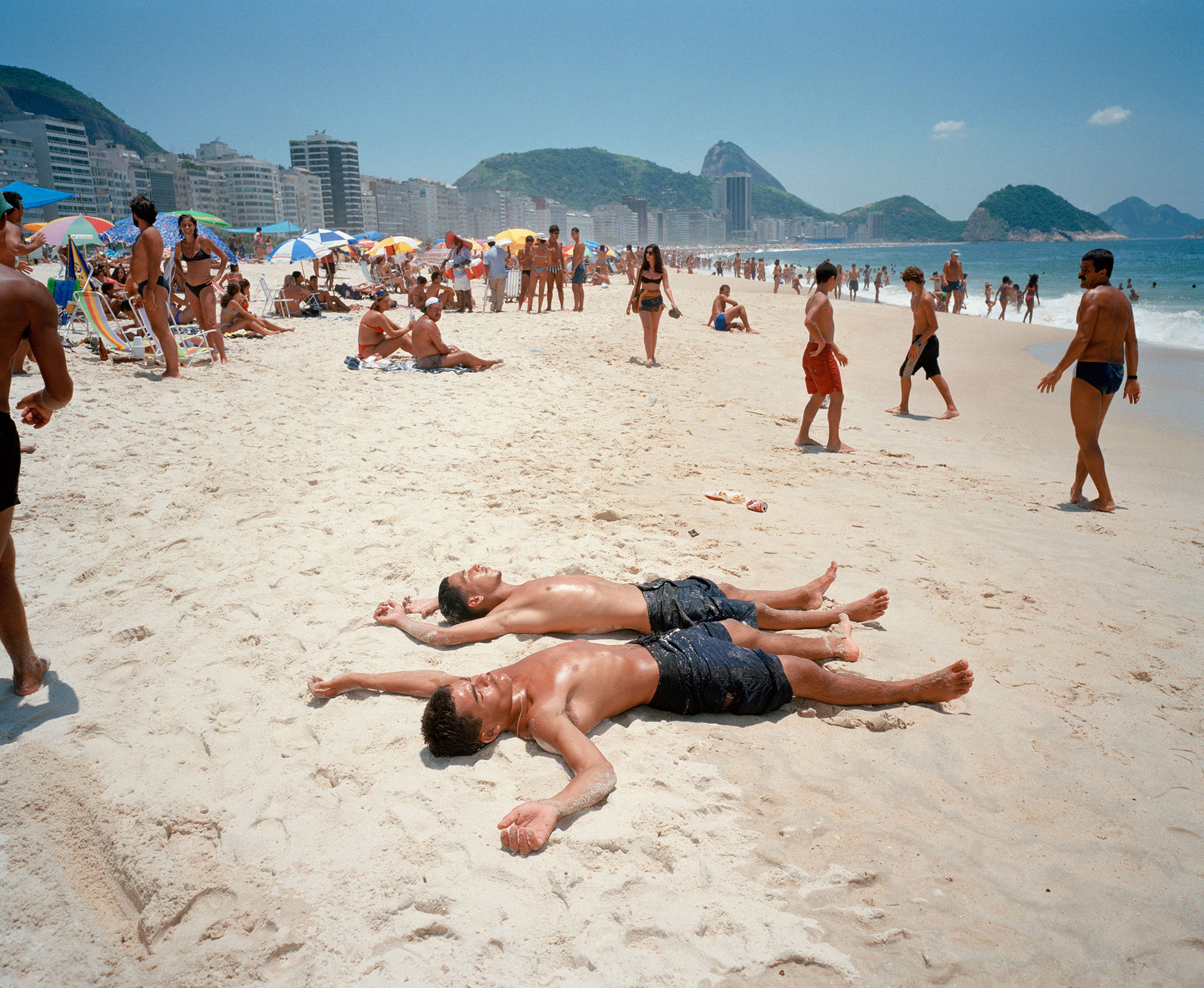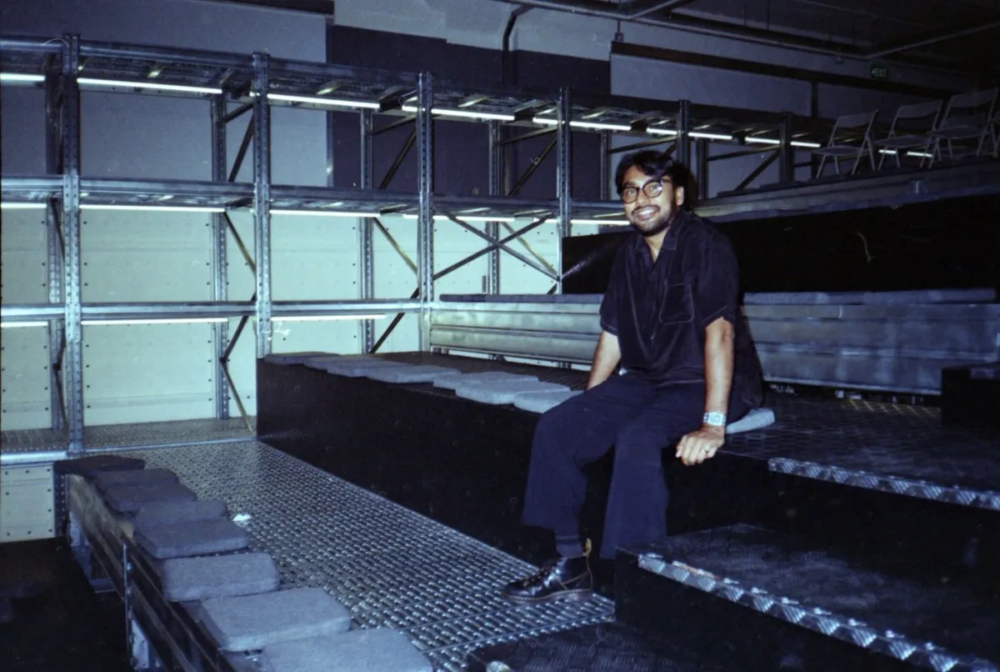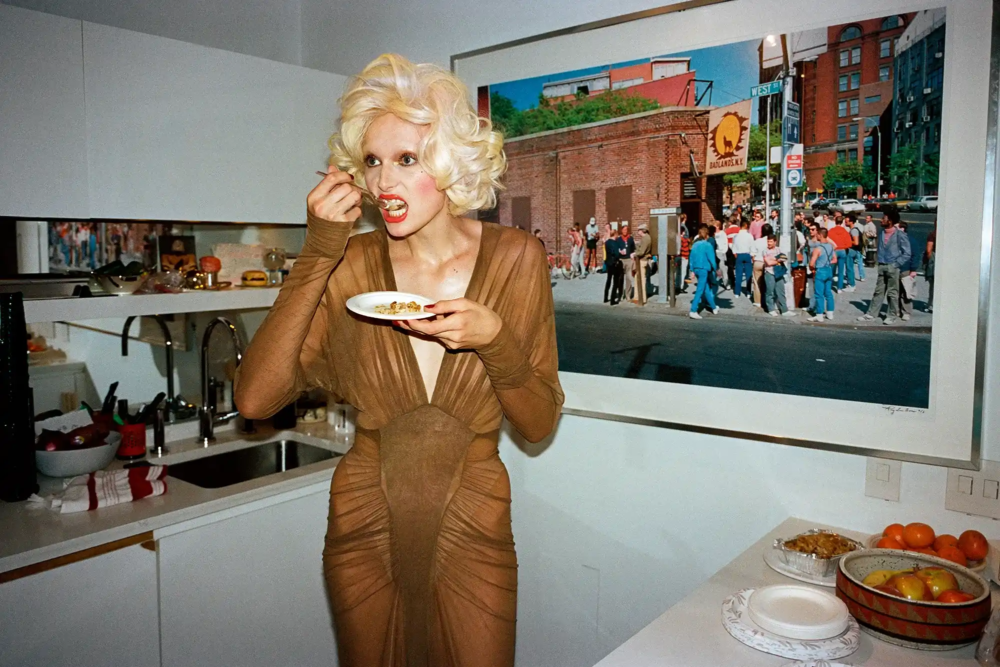
Farewell to Martin Parr, icon of documentary color photography and observer of ordinary life
From selfies to rising seas: revisiting our interview with the late Martin Parr and his sharp, affectionate eye on people, places and a changing planet
Remembering Martin Parr: His Artistic Verve and Human Insight
Martin Parr passed away on December 6, 2025, at the age of 73, leaving behind one of the sharpest, warmest, and most mischievously ironic gazes in contemporary photography. In this interview published by Lampoon, his artistic and human verve shines through with striking clarity. Parr moves from New Brighton — the working-class beach that launched The Last Resort — to broader reflections on tourism, the middle class, overconsumption, climate anxiety, and the quiet absurdities of everyday life.
What emerges is pure Parr: his dry humor, his resistance to grand narratives of decline, his fascination with the “interesting in a boring kind of way,” and his ability to reveal the contradictions of modern society through sunbathers, snacks, plastic toys, and crowds on holiday. Even as the world speaks of “global boiling,” he insists that his first duty is to make photographs that engage and entertain, letting social critique seep in almost accidentally, like an aftertaste.
Read now, after his passing, the interview feels like an informal testament. Parr speaks openly about his illness, about the mission of the Martin Parr Foundation to preserve British documentary photography, and about his lifelong love-hate relationship with Britain and its middle class. His unmistakable voice — blunt, witty, compassionate, self-aware — animates every line. And in that voice we find once more the essence of his work: a tender, ironic celebration of human folly, and the belief that even in a troubled world, there is always something worth looking at, and someone worth photographing.
Revisiting Mexico: an interview with Martin Parr on Changing Lenses, Beach Culture, and the Evolution of Selfies
Martin Parr: I’ve been back to Mexico a couple of times after that book came out. I’m no longer using the close-up lens, – which I did for that Mexico book. When I went back last time, I was just shooting on a normal 24-70[mm]. The pictures look different, but the country has stayed more or less the same. What has changed is the beach culture, with the introduction of smartphones.
These days, people do smartphone pictures. Us photographers have smartphones too, but we still usually shoot with a DSLR. In terms of beach culture, people are doing selfies. I’ve done a whole lot of work about tourism – people do selfies here, there and everywhere. I did a book about selfies. One thing that has changed is that the selfie stick has died. Ten years ago, if you went to somewhere like Venice, all these people were selling selfie sticks. Now, they have just disappeared – they’ve come and gone.
Meeting people and talking to them gives me creative sap – then, there are some projects where I have no desire or need to meet people. I’ve approached many types of projects over the years. When it’s appropriate, and when necessary, I will happily talk to people. I’m not interested just in wacky people for the sake of it. If they come to my lens, I’ll shoot them along with everyone else. I’m not going out there looking for characters or whatever you want to call it. I’m looking for people that are interesting in a sort of boring kind of way.
Martin Parr on Documenting the Middle Class in the UK and US: Why He Disagrees with Narratives of Decline
Isaac Crown Manesis: You have had a fixation with the UK’s post-Thatcher middle class. In the UK and the US, there’s been income polarization. Has this changed the visual culture of the middle class?
Martin Parr: Back in the Eighties, after I’d done my New Brighton project, I got a lot of criticism. Because I’m very middle class myself, they said How dare this middle class photographer come in and exploit the working classes? I thought: I’m going to do a book about the middle classes, because in terms of photography, they’re the least documented. I’ve continued to do pictures from the middle classes. There was a phase I went through in the late Eighties where this was a specific interest. I did a book called The Cost of Living.
I.C.M.: You have such an eye for the practicalities of middle-class culture – the prices and the things that people have to spend their time thinking about. Things have become more oppressively expensive for the middle class and opportunities have declined. I think the documented shrinking of the middle class has changed the lives that people have been able to live and the hopes that they’ve been able to foster. Is that a fair assessment?
Martin Parr: I wouldn’t agree with you, sorry.
From Documentarian to Historian: Martin Parr on Class, British Identity, and the Role of His Foundation in Preserving UK Documentary Photography
I.C.M.: I don’t want to steamroll my own reading into your work [Martin Laughs] I also feel that class is probably more discussed in the UK than in the US.
Martin Parr: There’s no doubt – there’s more class definition here, and I’d say that that’s the same now. You could argue that the rich get richer. Most people have to have a decent income to be middle class these days.
I.C.M.: As these projects have aged, your work has taken on a historical quality. With your recent focus on the foundation, you have made an effort to support the historical preservation of your work. What has that shift been like for you, from documentarian to historian?
Martin Parr: The foundation is set up here to first look after my own archive when I’m dead. Secondly, to give a platform to other British documentary photographers – photographers that have photographed in Britain – to give them exposure they wouldn’t normally have. We don’t appreciate photographers in this country, as much as you do in America, France or Germany. The role of the foundation is to show their work and support them. We acquire a lot of prints from different British photographers.
Capturing a Changing Britain Through Film and Color: A Photographer’s Ongoing Dialogue with His Homeland
Martin Parr: My collection is made of photographs taken in the UK. I suppose my legacy is also the pictures I’ve taken all around the world – but my collection’s first service is to tell people about my time in Britain over the last fifty years. I’m still shooting a lot in Britain. I have a form of cancer called myeloma, so I’ve had to slow down a little bit. But I’m still out there, especially in the summer when all the events are on and the beaches are full. That’s when I’m really happy and taking pictures.
I.C.M.: Have you found any broad narratives throughout your work as you’re assembling this collection?
Martin Parr: To try and define my complicated relationship with Britain. I love it and hate it at the same time, and it’s almost like a form of therapy doing the photographs.
I.C.M.: You seem resistant to these questions of change.
Martin Parr: No, it’s just that those early pictures look different mainly because they’re in black and white. I started using color in the 80s. Even the pictures and the ages, you look at the fashion, not so much on the beach, because that fashion sort of stayed the same more or less. But if you look at the fashion of events, you can see there’s a change of clothing, how people are different, the cars look old. There is change to be noted. But this is more of a fixation for you than it is for me.
I have a favor for the first picture in color way back in the middle Eighties. The book is still selling now. It’s on it’s like, seventh edition or something? I’ve done over 100 books, and not all of them are brilliant, but there’s some quite interesting ones in that sort of total. I have an affection for my earlier work. It’s not the thing I concentrate on, I’m thinking about what I’m going to do next.

Fading Shores and Rising Prices: How Beaches Reflect Social and Environmental Shifts in Parr’s Analog Archive
I.C.M.: I think that a lot of the things that you’ve captured are fleeting now. I fear that they are.
Martin Parr: Don’t fear it. That’s a good thing. That’s a plus point about that next form of exploration. It’s interesting to look back and see how clothes have changed. We’ll look at the fashions of the Eighties and we can think how terrible they are. Think of all the haircuts of the ages.
I.C.M.: I have a decade and a half of beach memories and already, the beaches that I’ve visited have changed. Some are gone now because of climate change.
Martin Parr: How can a beach go?
I.C.M.: The water levels rise and there is no sand left.
Martin Parr: The sea washes the sand out. I have not heard of that before, that is news.
I.C.M.: Also, beach areas have become far more inaccessible to working class people as property values have skyrocketed.
Public vs. Private Shores: Parr on Beaches in the UK, Greece, and the Global Symbols That Wash Ashore
Martin Parr: If you look at Athens, a lot of the beaches there are private, aren’t they? All beaches basically are public domain in the UK.
I.C.M.: Has climate change affected how you’ve seen people interact with beaches?
Martin Parr: Sometimes in the summer, we may get a bit warmer; the water is warmer. But we’re talking about 1.5 degrees centigrade. It’s not a big difference. The swimming trunks from 30 years ago are very similar to swimming trunks now, so you know, it’s not where you see people wearing fashion.
I.C.M.: One of the largest things I took away from “Mexico” was the iconoclasm of our visual culture, resulting from the ways globalization has forced incongruous things together. Have you seen migration patterns influence these trends even more.
Martin Parr: Since that book’s publication in the UK, more Mexicans are trying to get into America to a greater or lesser extent, I don’t know how successful they are. I don’t know how easy it is for a Mexican to get legal entry into America or do they just have to climb over the wall? I’m not sure. The Mexico book is looking at the cliches of the icons of Mexican life, and also comparing them to American cliches.
Things like Coca-Cola are pretty big in places like Mexico. I wanted to use that as an icon of the Americanization of Mexico, and how, for example, Halloween is overtaking the Day of the Dead as being the biggest celebration for an event which is very similar. We never used to have the commercial aspect of Halloween. That’s something that America has stressed on to the rest of the world is to exploit it commercially. Very typical America.
Humor, Color, and Crowd Scenes: How New Brighton Shaped Parr’s Critical Eye on British Life
I.C.M.: Do you have a criticality about these things?
Martin Parr: Humor is a sort of form of social critique? It’s not thrust down people’s throats. It is there if you want to find it, but I’m not saying this is ultimately. The first priority for me is to take an interesting, colorful picture. I believe in the role that picture should be to entertain. That is why I use bright colors – a macro lens with a ring flash. These effects were even more pronounced when I used film. My palette has slowed down a bit; it’s calmed down with my old age.
I recently photographed Glastonbury – the biggest music festival in the UK. I’ve done that for two years. This summer, I was out photographing places in the UK where I hadn’t got many pictures, going to different events, going to a few new resorts. I have been building up my archive about the UK more than anything else – I want to have lots of people and going to events where you get a lot of people; a show or agricultural convention, something like that. My aim is to photograph people. When I go to these events, I get to see the whole array of British people in front of me. With people, you never get tired of photographing them.
I.C.M.: Your love-hate relationship with the UK often comes up. This is something that many people around the world experience with a global rise in extremist politics. Do you think there’s anything redemptive about nationalism?
Between Nostalgia and Overcrowding: Parr on New Brighton, Nationalism, and the Pressures of a Growing Population
Martin Parr: I don’t think nationalism by nature isn’t healthy. We are having all these right wing leaders being elected. The thought of Trump back in for another four years is depressing, God knows what he will do then. The more I think about it, the more depressed I get.
I.C.M.: Have you seen overpopulation affect your vacation spots?
That is the other issue. There are far too many people on this planet. In countries like India – I don’t know about American birth rates – they keep getting bigger and bigger. Africa, same there. Again, the world’s resources are overstretched.
I.C.M.: How have the population rates changed in New Brighton and other rural communities that you documented early in your career?
Last year we had 700,000 people come in. That means that there’s more stress on the infrastructure in the UK. I’m all for immigration, I think it’s a good thing. But we’re not a big island, and therefore, ultimately, there’ll be too much of a crush. So that’s a potential problem. Although I’m in favor of immigration, I think the mix of creeds and different cultures here is a very good thing. I’m sure if you look now you’ll find we took a lot of people from Ukraine, Syria, Albania, and a lot from Afghanistan.
Climate Anxiety, Overconsumption, and a World at War: What Truly Worries Martin Parr Today
I.C.M.: You’ve noted that I’m obsessed with this question of change. I fear that there are these things that you captured critically, but that are also delightful aspects of the human experience and that are fleeting. Maybe my next question is an unfair one of projection, but is there anything that scares you most about our culture, society?
Martin Parr: I don’t like wars much. I’m pissed off about the fact that we got two major wars going on in the world at the moment – I don’t need to tell you where they are. Climate change is a problem. We’re all consuming too much; the world’s resources are being eaten up by the middle classes.
We have got the new middle classes, from China, huge numbers of people who want to be rich, all the things that you and I take for granted. The demands on the planet are massive. That’s depressing to think about. Climate change is also depressing.
I’m concerned about it, and I think that’s there to be read in my photographs. I don’t thrust it down people’s throats. The underlying critique of society is all around these questions of overconsumption. Me too, I’m the same. I get on lots of airplanes, because I have to fly to places for my work.
We’re well aware of climate change issues these days, but we’re not prepared to give up the things that you and I like. The governments aren’t doing anything; recycling in America is an absolute joke. Everything’s just put into the landfill. America is a problem. China keeps burning coal and Americans don’t recycle. They emit these poisonous gasses. America has got a lot to answer for.

Martin Parr on beaches – Crystal clear water, fine sand
On the beach, young and old frolic, the fat and the thin sun themselves, and the beautiful and ugly celebrate in their shared nakedness. Beach cultures vary vastly in terms of class; in some places, beaches come with an entry fee. Others are inaccessible due to their exclusive and expensive lodging options.
Varying greatly by locale, these high-end beaches typically have a lot in common: Crystal clear water, fine sand, and breathtaking vistas. Often, the same beach may host different tiers of visitors along its coast – one end might have a five-star resort and the other a camping ground.
It is hard to police how people move, and often even across these undrawn borders beach goers will walk and swim, disrupting a sorted order otherwise observed. There are other beaches, working-class, blue-collar beaches. Sometimes these beaches are not true beaches but instead are piers, jetties, ponds, rivers, and other less glamorous places. There are urban beaches, municipally managed and attracting tourists and denizens alike. New Brighton is one such beach.
Last Resort, Martin Parr
Martin Parr’s debut series, Last Resort, was a splashy foray into the kind of work for which Parr would become globally known. He aimed his lens at a Liverpool beach resort, New Brighton. Working-class and postindustrial, New Brighton offered Parr the opportunity to capture a thriving beach culture alongside iconoclastic intrusions.
In one early photo, a man lays out on a beach (more cement than sand) and tans while his daughter plays with classic sand toys. Beside them, and dominating the right corner of the frame, is an excavator. Martin Parrlikes to show these twists; he likes how close against one another we place contradictory things. In his own words, he searches for people and things that are interesting in a sort of boring kind of way. Of course, adding that It’s difficult to explain.
New Brighton
In 2022, New Brighton was the most polluted beach in all of the U.K. In 2022, there were 1,149 sewage dumps in Wirral that affected the New Brighton coastal bathing location, which is a result of the lenient policies from the then Environment Secretary and past Conservative Party MP, Therese Coffey. 248 people were moved to sign an e-petition urging the government to clean up the waterways and introduce regulation protecting bathers and the environment.
In Britain, the problem affects more than just New Brighton. In 2022, more than 5,000 sewage dumps impacted designated bathing zones. Another such affected seaside community is Scarborough, where high levels of sewage have threatened the tourist economy.
Surf shops in the community are threatened, and without intervention, many fear the already struggling towns may soon lose their critical lifeline of touristic spending. In a distinctly British fashion, one New Brightonian remarks in response to a consideration that the super polluting utilities company may assist in clean up measures, “We don’t even have public toilets here, despite asking for years.” Adding that to make change happen, citizens must take matters into their own hands and “just get this done”.
Martin Parr – Global Boiling
This is the community at which, between 1983 and 1985, Martin Parr aimed his lens. Since then, much has changed, though as you will see below, the photographer is reluctant to discuss change. It is a working-class community who loves its beach. In Parr’s eyes, these qualities are eternal. However, the forces that will define this century, overpopulation, global warming (upgraded, as you have seen, to “Global Boiling”).
Lake Michigan’s watershed. Pollution necessitated America’s civil engineers to reverse the flow of the Chicago River
When I was a kid, I vacationed in South Haven, Michigan. A beach town beside Lake Michigan, South Haven sits at an elevation of 614 feet – well above the highest waterline if all the world’s ice were to melt. It is inland, in the heart of the Midwest. Yet, global warming has already impacted this small community immensely.
A higher global temperature can mean more rain which means higher lake levels. It can also conversely induce drought, which leads to increased risks of forest fires, and a drastic fall in the lake level. My hometown of Chicago was constructed in the drained marshes of Lake Michigan’s watershed. Pollution necessitated America’s civil engineers to reverse the flow of the Chicago River to prevent industrial waste from contaminating Lake Michigan, an invaluable source of freshwater.
Excessive rain can cause the river’s flow to reverse, dumping sewage into the lake. During droughts, infrastructure is put at risk. As lake levels rise from rainfall and snowmelt, the water creeps beyond its historical boundaries, threatening sensitive dune ecosystems and disrupting roadways, homes, and industry.
Chiedi a ChatGPTThe lake becomes a threat to those who live beside it as their built systems become a liability to the water source.
Overpopulation and environmental dysregulation
Beaches and bathing have become one of the most iconic images of a culture in sway. To live is to recreate as well as it is to work and produce. People are drawn to water. It is biological and it is cultural. Water is holy. In some places bodies of water are integral to worship and become a site of worship themselves. In India, the Ganges River is considered to be the embodiment of the deity Ganga. It is a pilgrimage to bathe in the river and many send away the ashes of relatives in the river.
However, overpopulation and environmental dysregulation have threatened the river’s ecology and have made bathing a dangerous activity. Restoration efforts abound, but the Ganges shows us what might happen as we enter a critical stage of human existence. The same rivers, lakes, and seas that have supported human life for millennia can become dangerous to those who live beside them as a result of anthropogenic climate change and pollution.
We’re all consuming too much
This is not a new story. We have known about the risks of climate change to water systems for decades and have proceeded with a business-as-usual mindset. Yet there is no mystery as to its cause. As Parr elegantly puts it, “we’re all consuming too much; the world’s resources are being eaten up by the middle classes”. Parr captured the holiest days of the UK’s middle class, when resources seemed to flow freely and prosperity not only a horizon, but a promise.
In Parr’s photos, we can see the small decadences. A food photographer well before Instagram made forever cheapened the form to its current ubiquity, Parr has captured images of worlds culinary fixations from chicken’s feet to rainbow cake. In his food images, things that might feel naturalized quickly become plastic.
His gaze has been described by Greyson Perry as, “at once affectionate and teasing”. It is not that any of us are to blame for our indiscretions and waste, but rather that our society is one out of sync with any semblance of a circadian rhythm. This is, of course, tragic. But it is also funny and beautiful and loving these contradictions is what it means to be a member of a flailing culture in the throes of its own downfall. It is what makes Parr’s images so delightful.
Bathing suit – less ugly now than in the Eighties, according to Martin Parr, the only change in beach culture
Perhaps Parr’s beaches haven’t changed. For now, the beach is still a slice of heaven. But one day soon, our favorite beaches will be underwater. For most of us, the only thing we can do is put on a bathing suit (less ugly now than in the Eighties, according to Martin Parr, the only change in beach culture he will admit to having observed over the course of his career), and sun ourselves until our anxiety has boiled away leaving burnt flesh, dizziness, and the faint feeling of having forgotten something.







